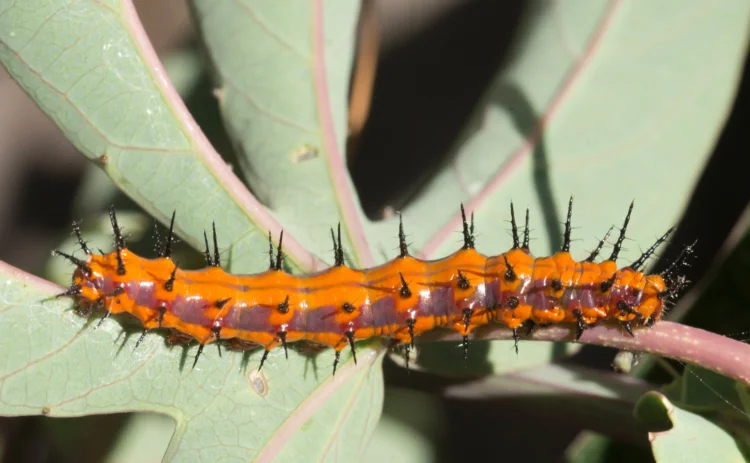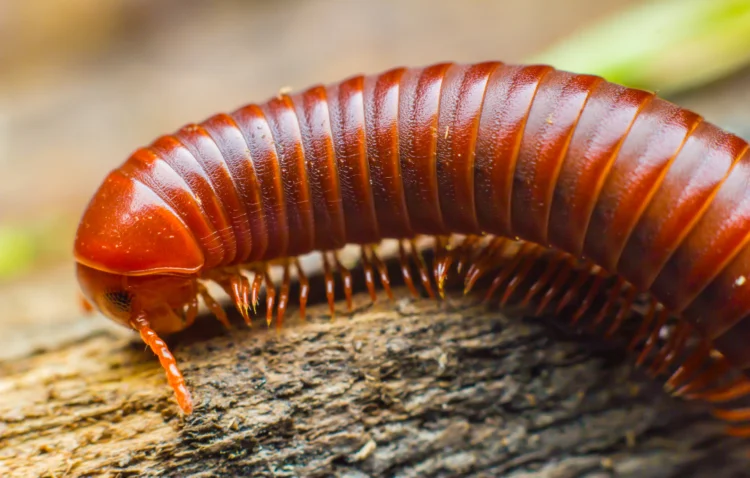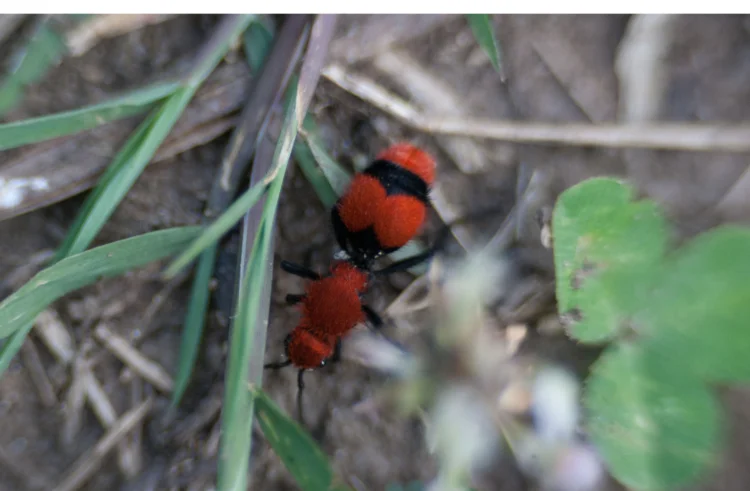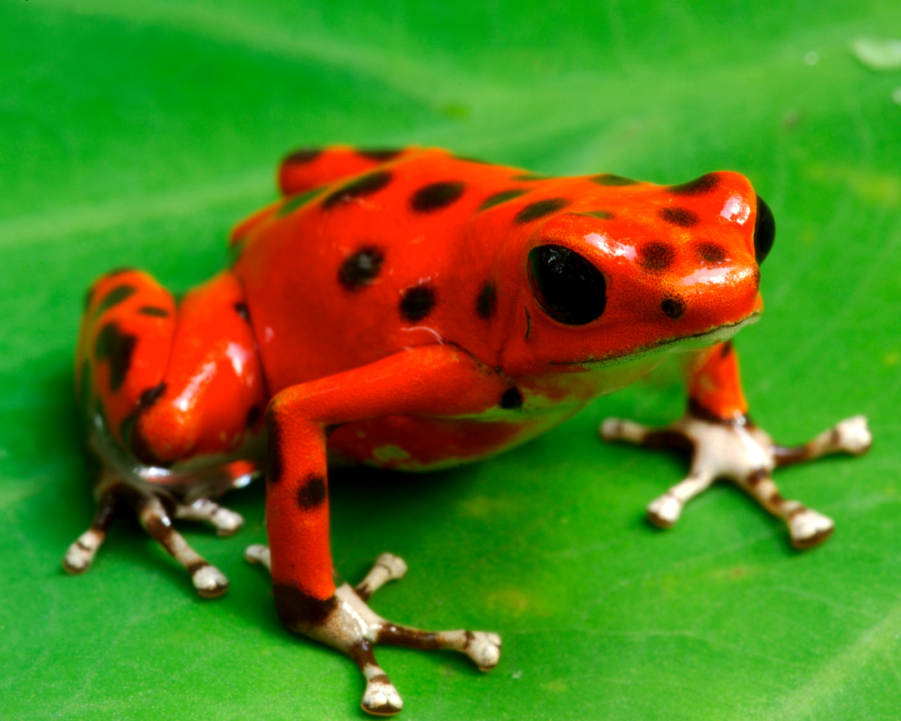The natural world is filled with beautiful colors. If you’ve ever been stung by a bee, then you know that not all colors mean good things. Many plants, animals, and fungi actually have bright colors to say “stay away.” Scientists call these warning colors aposematic coloration or aposematism. But how does it work in the first place? Let’s explore the science of aposematism in this The Deep Stuff post.
The “go away” sign
Animals with aposematic colors are making an advertisement to predators. Their bright colors signal that they aren’t worth attacking. For example, they may have chemicals in their bodies that make them taste bad, or that could be fatally poisonous. Alternatively, they could be aggressive and tough, letting predators know that they put up a fight.

In other words, warning colors send a clear message: “don’t mess with me, it’s not worth it.” Edward Bagnall Poulton, a 19th-century entomologist in England called these colors aposematic. He derived the term from the greek apo meaning “away”, and sema for “sign”. So, you can think of aposematic coloration as “a sign to stay away”.
How does aposematic coloration work?
The basic thinking of aposematic coloration is that predators can learn. If a bird picks up a brightly colored caterpillar and gets sick afterwards, it is less likely to do it again. Alternatively, if a toddler grabs a yellow-and-black striped insect and gets a painful sting, they might avoid them in the future.
By making themselves stand out rather than hiding, animals with aposematism can get their message across quickly. Predators won’t waste time attacking them, since they know from experience that it could be an unpleasant or dangerous affair.
Aposematic coloration is what scientists call an honest signal of toxicity or distastefulness. As a result, in most cases, the brighter and more impressive the coloration, the deadlier the animal and its defenses.
You can think of aposematism as the opposite of camouflage. While animals that camouflage protect themselves by not being seen, animals with warning colors want to be seen. Furthermore, they’ll make specific fashion choices to make sure that they’re not subtle.
Aposematic fashion sense

Aposematic coloration follows some pretty consistent fashion trends. This is because animals using warning signals want to be as obvious as possible. The more obvious they are, the less likely predators are to mess with them. Here are some fashion trends for aposematic coloration:
- Red, yellow, and orange hues
- Extremely bright colors (think highlighters!)
- Spots, stripes, or other high-contrast patterns
- Juxtaposition of black against bright colors to make it pop

The warmer hues found in many warning colors work well because they contrast strongly against the background of most natural environments. On land, the dominant colors are brown and green, so reds, oranges, and yellows stick out like a sore thumb.
Bright colors framed or patterned with black helps keep aposematic colors obvious even in lower light or shadow.
Examples of aposematic coloration
Aposematic coloration or warning colors are common in bugs, especially insects, as well as some amphibians. Even mammals like skunks and badgers have contrasting black and white colors to warn predators that they’ve got a bad smell or attitude.

Here are some classic examples of animals with aposematic coloration:
- Tiger moths (family Erebidae)
- Poison dart frogs (family Dendrobatidae)
- Poisonous snakes, like the coral snake (***)
- Velvet ants (***)

Warning colors in your back yard

Plenty of animals in your own back yard make use of aposematic coloration. In North America, many insects that eat milkweed acquire its poisons and advertise it with bright colors. Famously, this includes the popular monarch butterfly (Danaus plexippus).
In the U.K., burnet moths (family Zygaenidae) are common, brightly colored and poisonous bugs with gorgeous warning colors.
How did aposematic coloration happen?
Thinking in evolution, it can be difficult to imagine how aposematic coloration would have been created by natural selection. This is because, in order for predators to have had a bad experience to associate with a given prey animal, they would have had to eat a couple. Thus, those brightly colored, poisonous individuals wouldn’t pass on their genes to the next generation.
Taking this a step further, what about successive generations? Each new individual of a predator species would have to learn the lesson of what warning colors mean at least once. That would mean new, naïve predators born each year would take a toll on animals with aposematism despite their colors.

Researchers have suggested, and found evidence for, a number of explanations for how aposematic coloration may have originated:
- if warning colors were present in a large enough group of individuals, or if warning-colored animals grouped together, there would still be some left to benefit from a visual warning.
- Laboratory experiments show that many bird species, even as clueless youngsters, avoid the bright colors that are associated with aposematic coloration. This means that they may not have to learn to stay away from prey with those colors.
- Any predators with parental care and social interactions might pass down aposematic signaling to their offspring via generational learning.
- Many animals, including predators, are neophobic, meaning that they are afraid of new and different things. Bright, gaudy colors and sharp contrasts that stand out from the normal greens of the natural world might be inherently scary to them.
Thanks for reading about aposematic coloration!
Have you run into any cool examples of warning colors on your nature adventures? Let us know in the comments! If you or anyone you know has a question or topic you’d like explored in Gulo in Nature, send us a message using the contact page. Until next time!

